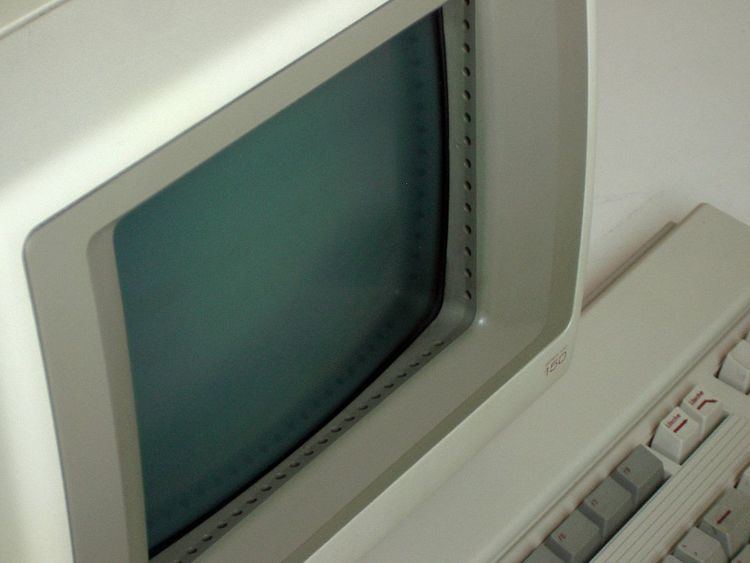 | ||
The HP-150 (aka HP Touchscreen or HP 45611A) was a compact, powerful and innovative computer made by Hewlett-Packard in 1983. It was based on the Intel 8088 and was one of the world's earliest commercialized touch screen computers. The machine was not IBM PC compatible, although it was MS-DOS compatible. Customized MS-DOS versions 2.01, 2.11 and 3.20 were available. Its 8088 CPU, rated at 8 MHz, was faster than the 4.77 MHz CPUs used by the IBM PC of that period. Using add-on cards, main memory could be increased from 256 KB to 640 KB. However, its mainboard did not have a slot for the optional Intel 8087 math coprocessor due to space constraints. The HP-150 with an optional hard disk was called the HP Touchscreen MAX.
The screen was a 9-inch Sony CRT surrounded by infrared emitters and detectors which detected the position of any non-transparent object that touched the screen. In the original HP-150, these emitters & detectors were placed within small holes located in the inside of the monitor's bezel (which resulted in the bottom series of holes sometimes filling with dust, causing the touch screen to fail until the dust was vacuumed from the holes).
Like the Macintosh, the computer was packaged with the CRT. Unlike the Mac, the 3½-inch disks were external. The HP-150 sat atop the phone book sized 9121D dual 3½-inch floppy (76 mm high, 325 mm wide, 285 mm deep) or similarly sized hard disk devices, connected by HP-IB. The HP-120 (aka HP 45600A) 2×Z80 CP/M machine also used the 9121 drives.
The HP-150 II (aka HP 45849A) replaced the HP-150 in 1984. While still called HP Touchscreen II, the touch screen was no longer standard, but rather a rarely adopted option. The optional touch screen bezel was superior to the original bezel, in that the emitters and detectors were now located behind a solid infrared-transparent plastic; removing the need to regularly clean the holes found in the original model.
The HP-150 II had the same footprint as the HP-150, but came in a larger housing to accommodate its 12-inch screen, but could no longer accommodate an internal printer. The HP-150 II had four expansion slots available (as opposed to two), and could accommodate an optional 8087 co-processor board. There were some minor compatibility problems between the HP-150 and the HP-150 II in the video subsystem.
In 1985, HP introduced the Vectra, which InfoWorld stated was the company "responding to demands from its customers for full IBM PC compatibility". HP repositioned the HP-150 as a workstation for the HP 3000 minicomputer.
HP-150's touch screen sensor grid is quite coarse. Its resolution is only two characters wide. Used mainly for rough cursor positioning and function key control, it could not be used to draw pictures.
Reception
BYTE in November 1984 called the HP-150 "an extremely flexible machine", but "difficult to program".
